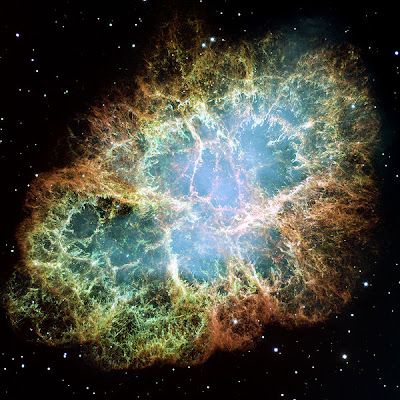I realized just as I typed "Planet Trivia" in the TITLE: field that it sounded like a name, like, let's go visit Planet Trivia. Wouldn't that be great? In movies, we have seen pleasure planets and prison planets and mining planets -- but never a whole planet just for libraries filled with random facts.
That would be my idea of a vacation! Anyway, in conducting research, I tend to come across a lot of interesting facts. While editing, sometimes they hit the cutting room floor as tangential pieces of information, or I just collect them in notebooks for personal pleasure. I have a few fun ones I thought I would share...
Astronaut Neil Armstrong first stepped on the moon with his left foot.
A neutron star has such density that a mere teaspoonful of its matter would weigh more than all the people on Earth.

Saturn's moon Titan has hundreds of times more oil and natural gas than all the known reserves on Earth.
If a pinhead-size piece of the Sun were placed on Earth, one would have to stand 90 miles away from it (or 145km) to remain safely un-burned and un-blinded.
The number of neuron cells in the average human brain is more than the total number of stars in our galaxy.
However, the cosmos contains approximately 50,000,000,000 galaxies.

In 1045 A.D. Earth time, the Crab Nebula was produced by a supernova explosion. Chinese and Arab astronomers of the age noted that the explosion was so bright, it lit up the night sky for months and was also often visible during the day.
The first woman in space was Russian Valentina Tereshkova in 1963. The first American woman was Sally Ride in 1983. (Yes, a 20 year gap!)
Driving at 75 miles (121 km) per hour, it would take 258 days to drive around one of Saturn's rings. The rings are made of chunks of water ice ranging in size from dust to large houses.
The Sun travels at a speed of 155 miles per second (or 250km) per second, but it still takes 230 million years for it to complete a single revolution of the galaxy.

Humans have played the guitar, piano, flute, saxophone and digideroo in space.
Fact or Legend?
One of the things that the Apollo 15 mission accomplished was to deposit a cockroach on the moon. During their outward flight, the astronauts noticed a cockroach in their spaceship, but when they returned, the craft was thoroughly inspected by NASA technicians and no trace of it was found. The only conclusion is that it crept out and was left behind.
I have found this tale on a few websites, but no dependable corroboration (of course, it's not something NASA would publish on their website, is it!), so take that last one with some sodium granularity.


































































